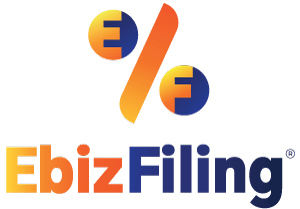
-
October 20, 2022
7 primary differences between EPF and PPF (Public Provident Fund)
Table of Content
Introduction
Employees’ Provident Fund (EPF) is a retirement benefit programme designed only for those who receive a salary. The company and employee will both make contributions to this plan. The Public Provident Fund (PPF) account, on the other hand, is especially created to provide everyone with income security in old age. This article will emphasises on the Difference between EPF and PPF, “What is EPF (Employee Provident Fund)?”, “What is PPF (Public Provident Fund)?”, and comparison between EPF and PPF.
The main advantage of investing in these plans is that you can start modest with your money and end up retiring with a sizeable corpus of wealth. It’s crucial to understand these programmes before making an investment in either an EPF or a PPF.
What is PPF (Public Provident Fund)?
The Public Provident Fund permits investment from people in all occupations, including those who are employed, self-employed, unemployed, and even retired. Anyone may donate any amount to this investment form, with a minimum need of INR 500 and an annual contribution of up-to INR 1.5 lakh. The government determines the PPF’s set return each quarter. A PPF (Public Provident Fund) account can be opened at the post office or through any of the nation banks.
What is EPF (Employee Provident Fund)?
Employers and employees jointly contribute to the EPF programme. Every month, 12% of your basic pay is contributed by both you and your employer. The Employee Provident Fund Organization, a government agency, is in charge of this programme. According to EPFO regulations, a total of 24% of your basic pay is contributed to the EPF account by both you and your employer. When retiring or moving jobs, you can withdraw the money you have saved in your EPF (Employee Provident Fund) account.
7 primary differences between EPF and PPF
|
Employee Provident Fund (EPF) |
Public Provident Fund (PPF) |
|
In EPF Scheme only salaried employee of a company is registered. |
In PPF any individual who is a resident indian (excluded HUF) can opt for this scheme. |
|
12 percent of salary that includes basic salary and DA (Dearness Allowance). |
On the other hand in PPF scheme minimum amount is INR 500 and maximum limit for investment is INR 1.5 lakh. |
|
The interest rate on investment is 8.50 percent. |
The interest rate on investment is 7.1 percent. |
|
The maturity period for EPF is until retirement. |
The maturity period for PPF Scheme is 15 years from the date of initial investment. |
|
Contribution is deductible from taxes. Only at the end of the initial five-year period the maturity amount tax-free. |
Under Section 80C, the donation is tax-deductible. Additionally, the maturity amount is tax-free. |
|
Employee Provident Fund and Miscellaneous Act, is the governing Act for EPF. |
Public Provident Fund Act, is the governing Act for PPF. |
|
Employee and employee contributes equally to the employee EPF Account. |
Any individual or a parent in case of minor can contribute to the PPF Account. |
Comparison between EPF and PPF
Based on the discussion above, we can say that EPF is more advantageous than a PPF account because, in addition to you, your employer contributes to your EPF account. It is a kind of collaborative contribution to your future. However, such contributions are not permitted in a PPF account.
Furthermore, you can withdraw your EPF funds whenever you need them for personal reasons. However, you cannot do so with a PPF account. You can withdraw funds from your PPF account only after it has reached maturity. Furthermore, the interest rate on an EPF account is higher than the interest rate on a PPF account.
Winding Up
Both schemes are initiatives launched by the government for individuals for there retirement life. The primary difference between these two schemes is that in PPF, anyone who is a resident Indian (excluding HUFs) can invest, whereas in EPF, anyone who is employed in any company, firm, or business can invest.
Suggested Read: GPF Vs EPF Vs PPF
Provident Fund Return
File error-free PF Returns and in-time. File your PF returns through experts ebizfiling.com.
About Ebizfiling -





Reviews
Deepika Khan
29 Sep 2018I would rate 5/5 for their services, pricing and transparency.
Hemanshu Mahajan
01 Apr 2018I registered my LLP company, from eBizfilling. Great team and very competitive pricing. Will definitely use their services again.Thanks for work well done.
Neeta Vakhariya
09 Mar 2018Delighted to work with them. Very efficient and hardworking staff.
April 2, 2024 By Team Ebizfiling
Compliance Calendar For The Month of April 2024 As the new financial year begins in April, businesses and taxpayers around the country have new opportunities and responsibilities. It provides an excellent opportunity for strategic planning and budgeting, allowing businesses to […]
March 8, 2024 By Siddhi Jain
Section 194B of Income Tax Act, 1961: Prize, Betting, Lottery Winning Tax Introduction In the present day, there is a wide range of game shows, including the popular Kaun Banega Crorepati (KBC) and Fear Factor, as well as reality shows […]
February 29, 2024 By Siddhi Jain
Compliance Calendar For The Month of March 2024 Welcome to the Compliance Calendar for the month of March 2024. March being the last month of the Financial Year 2023-24, it becomes crucial for businesses and individuals alike must keep track […]